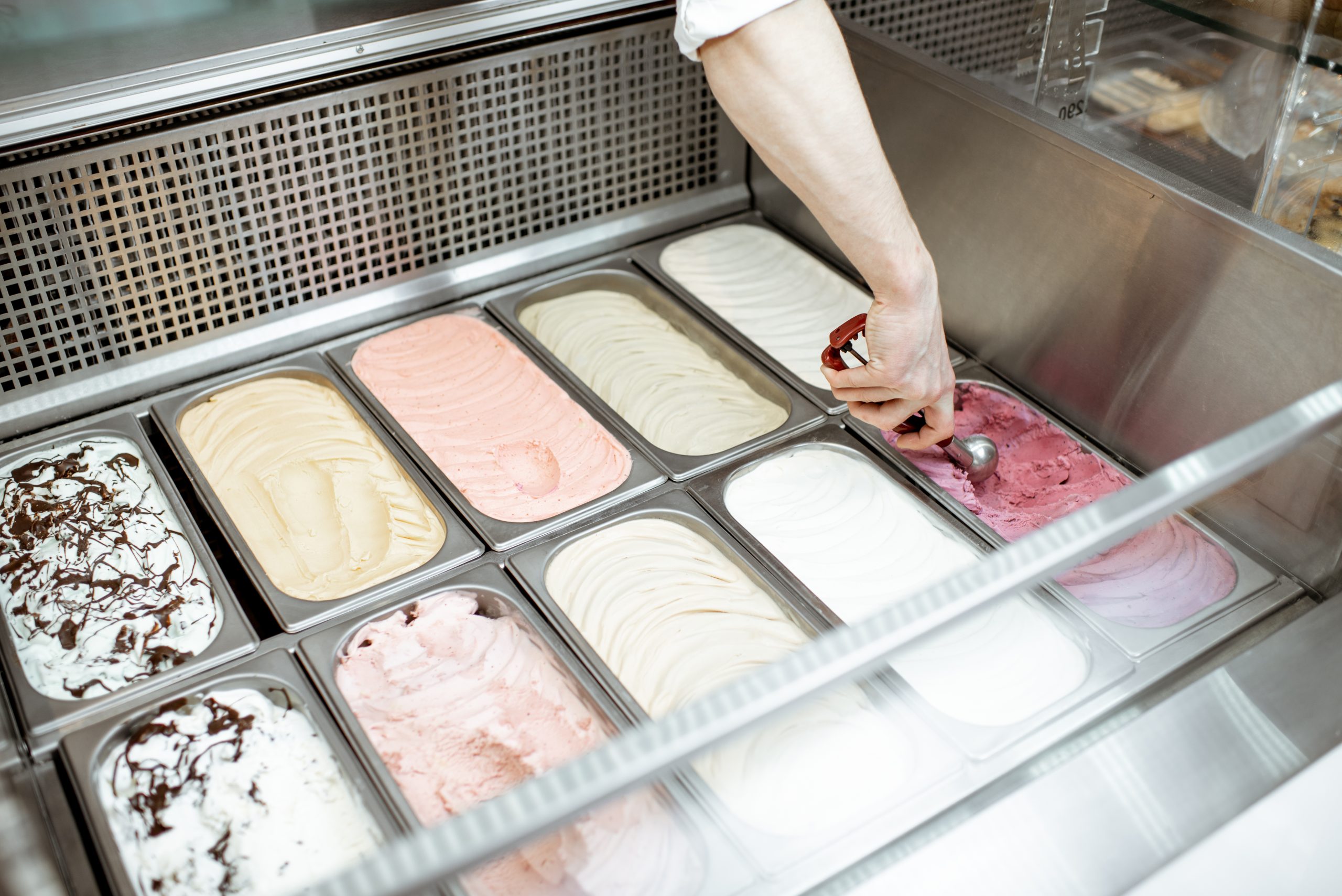We’ve all been there. You take your ice cream carton out of the fridge, and are presented with something more akin to the iceberg that sank the Titanic than the beautiful creamy confection we all know and love.
Perhaps in a domestic setting this isn’t such a catastrophe. After all, we usually store ice cream at home in small quantities. But imagine how much greater the frustration is when this happens in a restaurant or other food business?
So, rock-hard ice cream is bad news, and yet can be avoided if you follow a few guidelines on ice cream storage.
What causes ice cream to harden in the freezer?
The common cause for ice cream to harden in the freezer is a simple one – the temperature is just too low.
Ice cream needs to be stored ideally at a temperature of between -12°C (10°F) and -20°C (-4°F). At temperatures above -12°C (10°F), ice crystals begin to form within the ice cream, causing it to lose its smooth texture and become grainy.
If the temperature is too low (below -20°C or -4°F), the ice cream can become overly hard and difficult to scoop. As you can see, it is quite the balancing act to get the temperature right.
Another reason why you get hard ice cream is because of something called freezer burn. This is when ice cream loses moisture and is exposed to the air.
You’ll notice certain changes in the look and texture of the ice cream if this happens. Maybe its colour will be transformed slightly, the texture will be grainier, and you’ll notice ice crystals forming on the surface.
Suddenly, instead of perfect tasting creamy ice cream, you’re left with something that just isn’t so delicious and that’s pretty dispiriting if you are a chef who has been working hard to balance the flavours and texture of your ingredients, only to dig it out of the freezer in a less than appealing state.
The reason these ice crystals form is usually because the ice cream is constantly being taken in and out of the freezer. It thaws a little in the heat of the kitchen then refreezes once it is returned to a colder temperature.
This is common in commercial kitchens when people are in and out of the freezers all the time, but the problem of this occurring time and gain can be minimised by using the correct container when storing ice cream.
If you have ice cream tubs designed specifically for the purpose of preserving your delicious creamy confection, then you are almost there.
An airtight lid is key to storing ice cream as it will ensure that it will not oxygenate.
If ice cream has been opened and has partially melted on top, you can minimise the possibility of freezer burn with this hack: flip the container upside down with the lid securely fixed.
You should ensure that nothing is dribbling out before placing it back into the freezer where any runny remnants of ice cream will collect in the lid rather than as crystals on the top of the ice cream.
How ice cream should be stored so that it doesn’t go soft
Store in the back of the freezer
It makes sense that if the door of the freezer is opening and closing all the time in a busy kitchen, then you should minimise the possibility of your ice cream melting every time it is exposed to a blast of warm air by storing it as the very back of the freezer. You could surround it with other frozen goods as further protection from the warmer air.
Close the freezer door
In busy kitchens, freezer doors are often opened and stay that way while the person carries out a task. Encourage the closure of freezer doors immediately after an item is retrieved.
Use a container that is fit for purpose
Proper ice cream containers will have a lid that fastens securely to ensure that your confection remains airtight.
How to keep ice cream soft when freezing
Professional ice cream makers have blast chillers that will deep freeze ice cream within minutes, and it is this that keeps ice crystals small, ensuring that your frozen treat remains deliciously fresh and creamy.
However, not every small restaurant or supplier can afford such luxuries.
Do not fear, because the right kind of storage container can speed up freezing thus helping it to retain its soft texture.
What you need to seek out is a container that has a high surface area to volume ratio, that is one that’s wide and flat so that more of the ice cream is exposed to cold air.
In this way, the ice cream will freeze quicker and remain soft and creamy.
Looking for the perfect container in which to freeze your ice cream?

